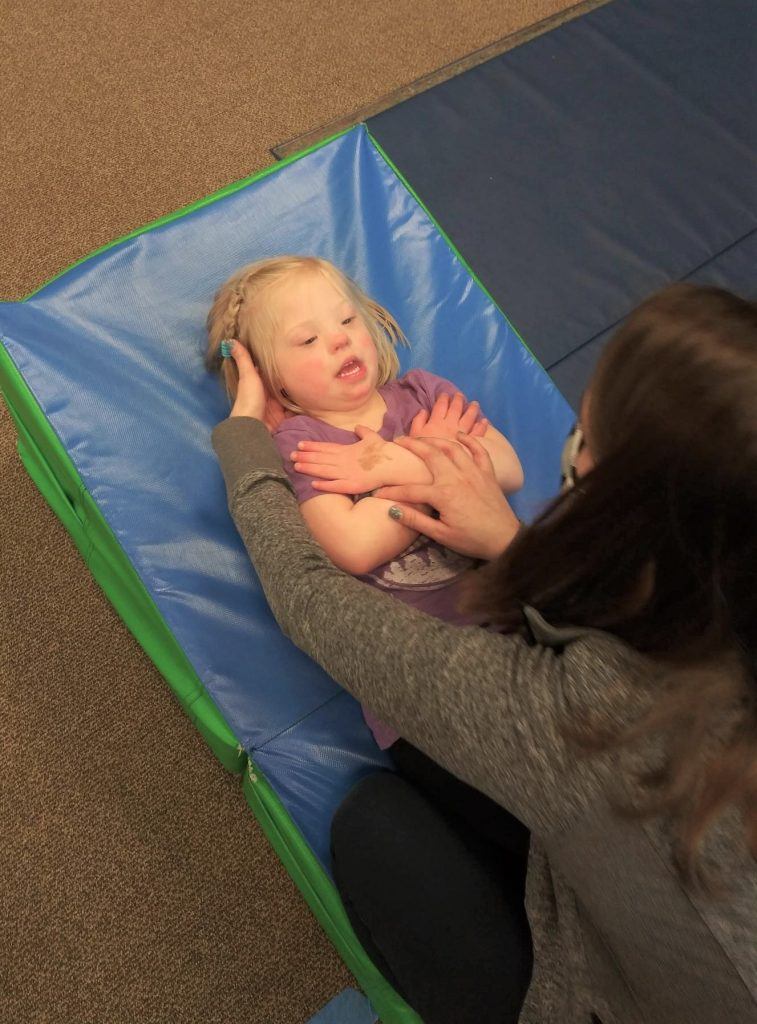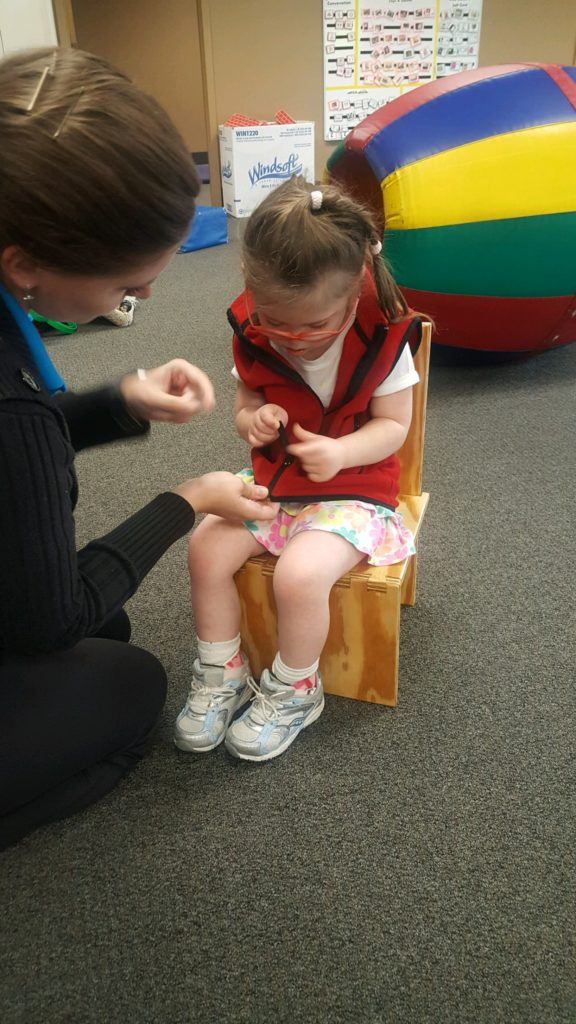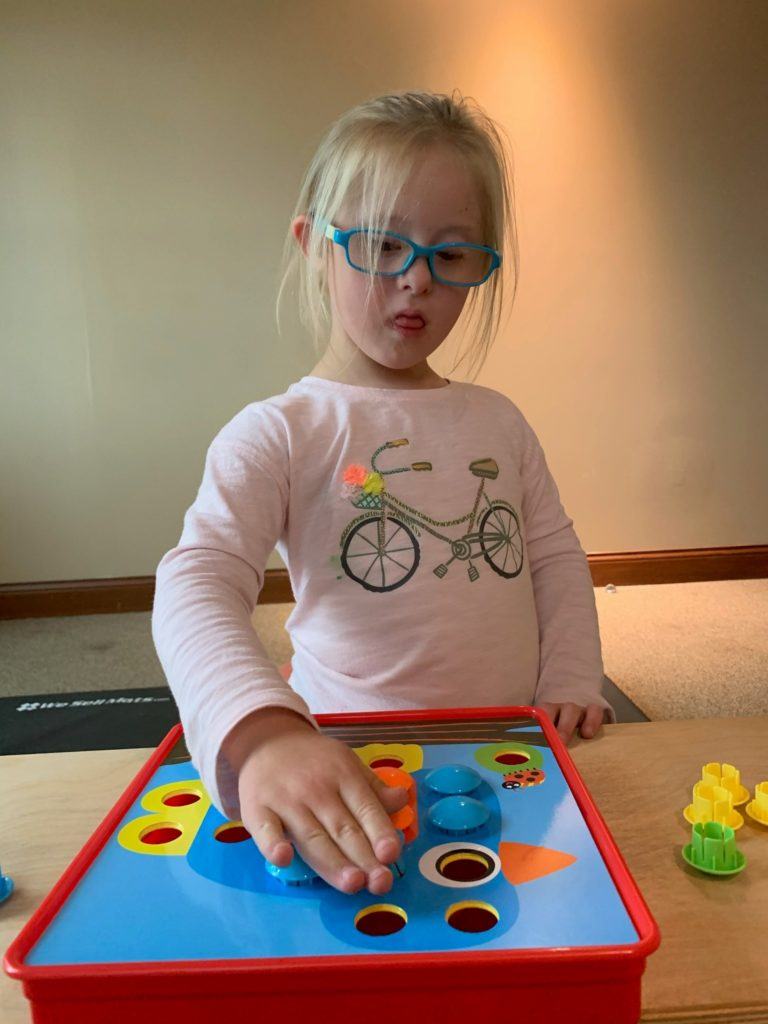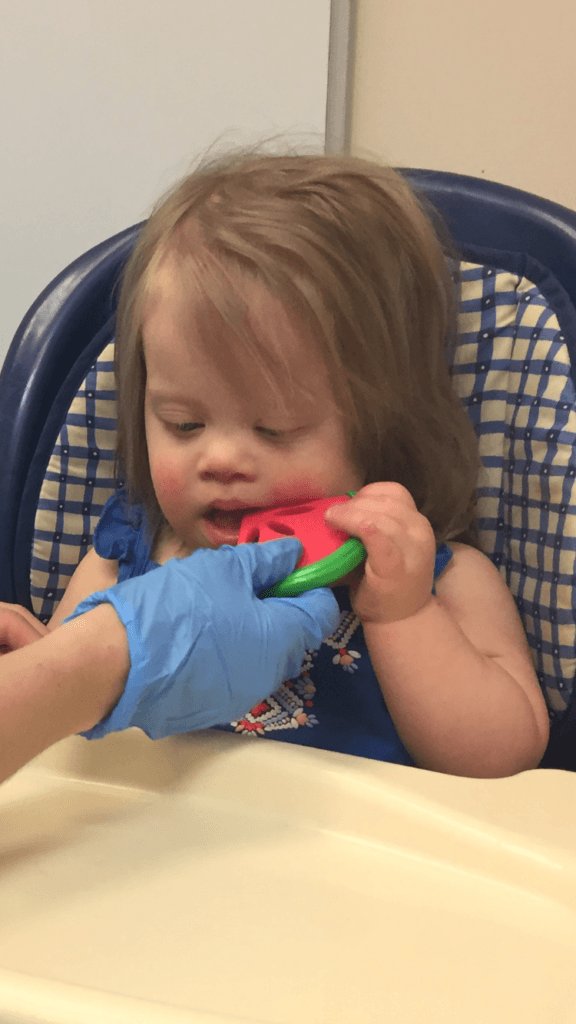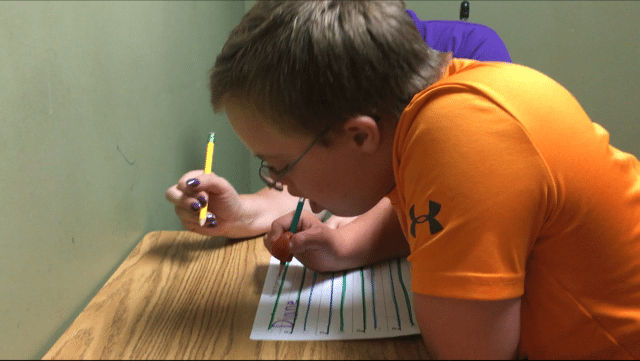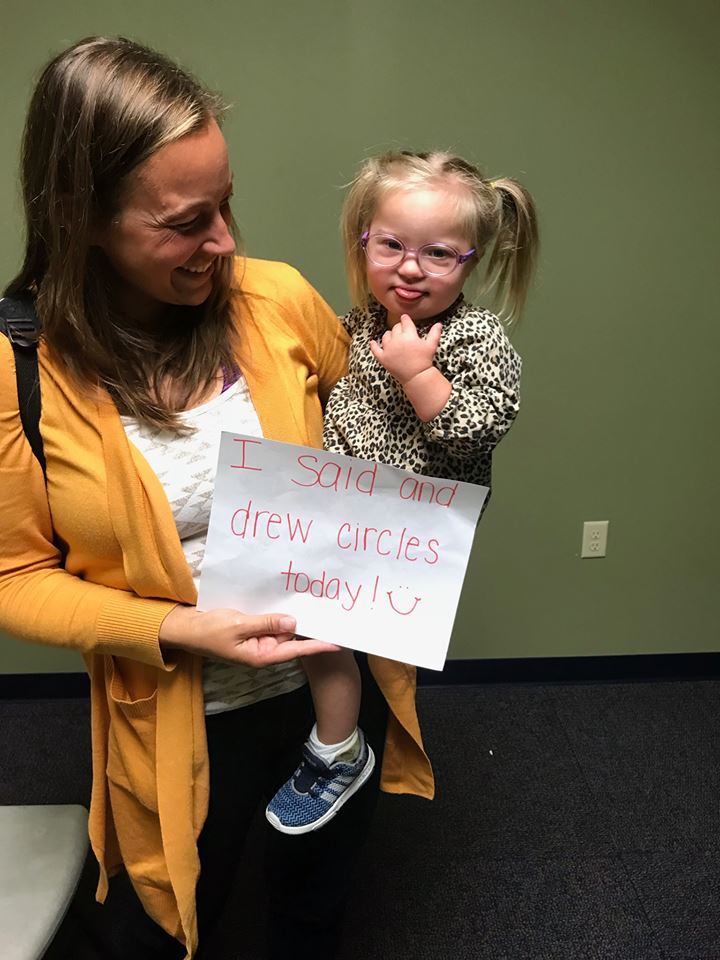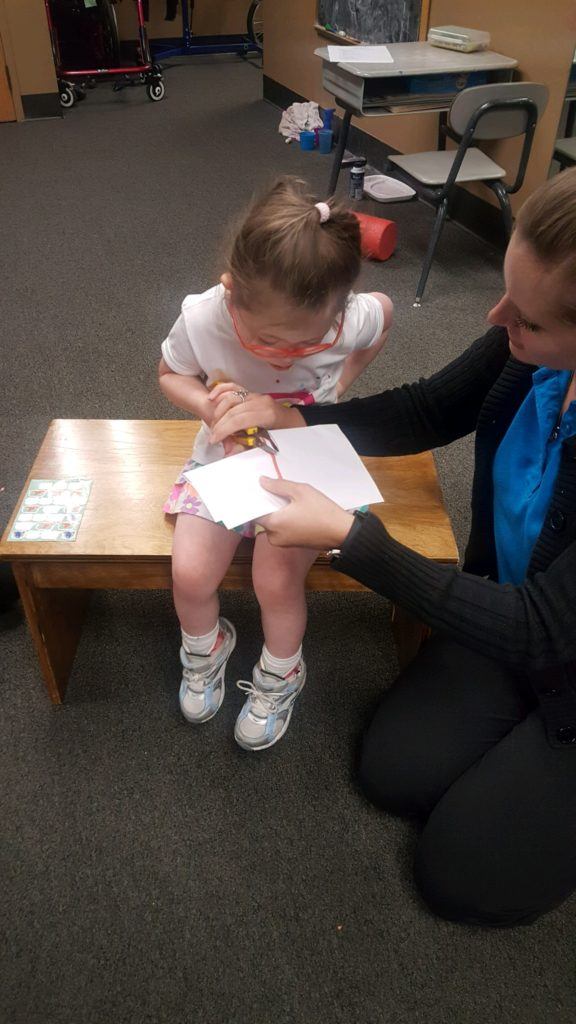The Fine Motor Skill Path
Starting Line:
Fine motor skills are tasks that require the use of small muscles. Success with these activities begins with a strong foundation. This means strong back and belly muscles.
As the body’s foundation, a strong back and belly will allow the shoulder to work more effectively. The hand will work better if the both the shoulder and elbow muscles are strong.
Interesting fact: Look at your child’s sweet little hand and forearm. Did you know that there are 35 muscles that control the movements of the hand?!?! That is a lot of muscle action!
Our bodies are all connected. So, starting with strengthening of the core and shoulder leads to muscle control of those 35 little muscles used for fine motor skills.
Phase One:
- Lots of tummy time!
- Propping on elbows on belly
- Progress to propping on extended arms on belly
- Rolling from back to belly
- Rolling from belly to back
- Holds a toy and shakes it
- Reaches for a toy while playing on belly
Interesting fact: Placing weight on the hands stretches out small muscles to prepare these muscles for use. Therefore, time on the belly progressing to time in all fours is so important.
Phase Two:
- Sitting on their own
- Waves bye-bye
- Releases object intentionally
- Passes a small object between hands
Phase Three:
- Turns page of a cardboard book
- Helps to pull off simple clothing
- Puts object into others
- Pulls shoes off
The key is to know what next steps to encourage!
Phase Four:
- Turns a container to pour or dump contents
- Places spoon in mouth right side up
- Helps to dress and undress self
- Puts large round pegs into pegboard
Look ahead and be sure you have the toys in your home ready for your child to explore!
Phase Five:
- Drinks from cup independently
- Looks at picture books by self
- Zips and unzips easy zippers
- Scribbles without going off paper
- Builds a 4-6 block tower
Strengthening tip: Playing with play dough, paint and crayons will increase small muscle strength
Phase Six:
- Grasps pencil with thumb and fingers instead of fist
- Screws and unscrews jar lids
- Eats with a fork (with spillage)
- Accurately pours from 1 container to another
- Completes a simple 3 piece puzzle
Phase Seven:
- Dresses and undresses without much help
- Colors almost entirely within lines of circle
- Draws a person with 3 different body parts
Phase Eight:
- Zips most zippers
- Copies and cuts a square
- Traces around own hand with crayon
- Completes simple dot to dot pictures
- Copies color/shape sequence
Look out school – here I come!
Developmental Checklist
Is your child meeting their developmental milestones?
 Skip to content
Skip to content
